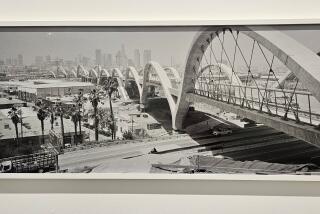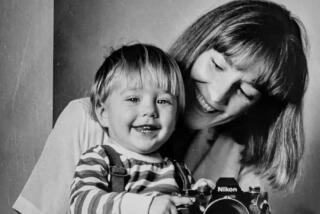Alison Wright, photographer, chases faces, grace
Alison Wright got her first camera at age 10, a Kodak Instamatic. Then she learned there was such a thing as a photojournalist, a person who traveled the world taking pictures. So that was that.
She had a career – a career that would eventually bring her National Geographic assignments, book contracts, documentary photography prizes and speaking engagements, but only after first bringing dengue fever, typhoid, hepatitis, giardia, dysyntery and, 12 years ago, near death.
That’s when a logging truck smashed into a bus she was riding through a Laotian jungle. Villagers pulled her from the wreckage, stopped the bleeding and got her to a hospital.
“I’m really here because of the kindness of strangers,” says Wright, who has just published her ninth book. “I think about that every day of my life.”
Wright told of her crash and her battle to recover in the 2009 memoir, “Learning to Breathe: One Woman’s Journey of Spirit and Survival.” There were more than 30 surgeries, yet eventually she got strong enough to climb Mt. Kilimanjaro. Now she’s traveling the world again. In fact, she went back to the scene of that 2000 crash in Laos. She has also set up a Faces of Hope Fund to channel donations to charity efforts in Laos, Thailand, India, Haiti and Israel.
But photography remains the center of her working life. Wright’s new book, just published, is a coffee-table portrait collection called “Face to Face: Portraits of the Human Spirit” (208 pages hardcover, 184 photos, $75, Schiffer). The photos, taken over 25 years, focus heavily on indigenous people in Asia and Africa.
As “an admitted romantic pastoralist,” Wright said she feels drawn to those who live close to the land, especially those whose communities “may not last even another generation,” because of war, natural disaster or simply the march of modernity.
In a two-part conversation by telephone and email, Wright, who lives in New York, took on 10 questions about her journey, her portraits and the mysterious furry object on her office desk.
Did you really go back later and ride a bus on the same Laotian jungle route where you nearly died?
Once I had climbed Kilimanjaro, I felt I had gotten my physical strength back, but as any good mountain climber knows, the real survival is in the descent. What does one do with a life that’s been given back? I was also dealing with some post-traumatic stress issues, violent dreams and the like. I knew that in order to continue the life of travel that I so loved, I needed to get back on the bus. It’s not for everyone, but I’ve always been one to confront my biggest fears head on. It also meant a lot to me to return to the village and thank the villagers who had so graciously tended to me when I was dying. I even got to thank the young man, who I found out was not a doctor, not even a nurse, who had sewed up my arm with a needle and thread and staples. They all waved me off and gave me strength as I boarded the bus from their village.
Ironically as we rounded one of the corners on this precipitous and dangerous road we actually clipped another bus. It was like déjà vu… People screamed. My seat-mate turned to me and said, “My God, that was close.” I just said, “You have no idea.” It brought home the preciousness of life. One minute an event can change your life. Or not.
Your mother was a Pan Am flight attendant from England. Your father was Belgian. And you grew up in the United States. Did your parents actually set out to create a world traveler?
Yes. My parents were very well traveled themselves. They both grew up during the war and wanted me to have a better life in America, yet all my relatives have remained in Europe. I’ve lived and worked all over the world. My parents really gave me the wings to fly.
How do you win over a portrait subject?
I enjoy the challenge of inviting someone to make a portrait, even if we don’t speak the same language. I believe that people can read your intent. Everyone wants to feel respected. And who doesn’t want attention, to be made to feel special? It takes an opening of the heart rather than a fear of approaching people. I’m also 5’2” and carrying a lot of equipment, so I’m usually the one that’s more likely to feel threatened.
How often does somebody refuse to be photographed? And where are people most likely to do that?
Muslim countries are tough. Afghanistan was not only dangerous but also challenging for me as a woman. I found the Afghan women to be incredibly brave, beckoning me into their homes and asking me to photograph them without their burkas on. There’s nothing sneaky about the way that I work; there’s often some kind of interaction. If someone I meet in any of these countries doesn’t want their photo taken, I’ll try to playfully cajole them as they’re often just being shy. But if they’re adamant, I’ll move on. There are plenty of other people that don’t mind. I’m not a paparazzo, and it’s not my intent to make a photo of someone looking upset and uncomfortable.
The conventional wisdom is that photojournalists need to stick to observation and not become participants. Since Laos, have you been following that advice?
I’ve had situations where I’ve been photographing but have had to put the camera down to help someone in a harmful situation or even save their life. I’m a devoted photographer, but first and foremost I’m a humanitarian. I also believe in photography as activism. So much so that I started my own foundation (Facesofhope.org), which helps children in crisis around the world. I always hope that making a photo will make a difference, but sometimes it doesn’t feel like enough. I feel that my photography is a conduit for creating awareness to some of the world’s distresses. I want to highlight not only the problems but also show the solutions and there are some people involved in some wonderful grassroots projects that I try to support. In this way I try to support the communities that I visit. After having my life saved by those strangers in Laos it became increasingly important for me to give back in some way. Every day I ask myself, what kindness would I do for a stranger? I was able to bring five doctors and $10,000 worth of medical supplies to that little village in Laos, send girls to school in India, bring tents to Haiti when I covered the earthquake, help a rehab clinic in the Middle East. Now I’m raising funds for a mobile medical unit for Burmese refugees in Thailand.
You teach photography workshops. What do the students most want to know, and what do you think is most important for them to learn?
I‘ve been leading photo workshops for many years. This year I’m leading one at the beautiful Linden Centre in Yunnan, China, from Oct. 9-22, but I always have new ones coming up that are listed on my website. I really like to photograph people in their environment so I try to help clients feel more comfortable with how to approach people from other cultures. I give them tips, but I feel the best photos are made on your own, not in a pack. Then we look at each other’s work in critiques. It’s a great experience to hang out not just with me, but with other fellow like-minded photographers.
What’s the story behind the new book’s cover photo?
I have traveled to Tibet nearly every year for the last 20 years. On this trip in 2005, I was driving in the remote eastern region of the Tibetan Plateau when I saw this young girl, part of a crowd returning from a horse festival. It was pouring rain, so I brought her to a nearby school to take her photograph She was so small that the light from the window barely reached her; I had to stand her on a desk. Even at the age of 4, she had a face that seemed to express the underlying sadness of a culture that has been so challenged. Yet she had a look of resilience and tenacity well beyond her years.
How did you choose the images for the book?
I have spent a lifetime trying to capture the enduring universal human spirit through my photographs. The planet, at times, can seem so vast, with the numbers almost too large for us to comprehend. But when you capture the look in someone’s eyes, an intimate stare, a knowing glance, his or her situation becomes a shared experience, a more personal connection. Their eyes seem to radiate a dignity, a claim for a right to be seen, no matter what their circumstances. The new book is curated from a triangular viewpoint. I saw the subject, now they look back at you the viewer. I wanted to create a connection with the eyes. Then I paced it visually, with elements of color and not so much regionally. I have thousands of images of people that I feel emotionally connected to, so the editing was tough. When I was deciding on the layout I lined my New York apartment hallway with all the prints. Although my neighbors were intrigued, the superintendent of my building practically had a heart attack. I’ve since moved.
You have an hour to make a portrait with anyone on Earth. Who will it be?
I always love photographing the Dalai Lama. He just effuses happiness. I’ve had the wonderful opportunity to photograph him numerous times over the years since I first met him in 1988, which has resulted in dozens of book covers and my book, “A Simple Monk.” As far as someone new, I’d love to photograph Nelson Mandela. I admire survivors.
On your desk at home, you have a softball-sized hairball from Kenya. Explain.
I believe the best photos are made on your own and not in a pack, so I traveled around Africa by myself with a driver. One night I pitched my tent in the middle of the Masai Mara. With the light of dawn I was a little nervous to see how the warriors would react to a white women being on her own as I’d heard that they can be rather intimidating.
To my surprise there was a long line of Masai, spears and all, waiting outside my tent. The headman welcomed me and presented me with a hairball. I had no idea what it was. It turns out that while cats have small hairballs, lions have rather large ones and this particular one was nearly the size of a softball. The headman’s wife stood shyly behind him and offered me a warthog tusk. These still sit on my desk as some of the most precious gifts I’ve ever received. It’s a daily reminder that it’s usually the ones who have the least who give the most.
Follow us on twitter @latimestravel
Like us on Facebook @Los Angeles Times Travel
More to Read
Sign up for The Wild
We’ll help you find the best places to hike, bike and run, as well as the perfect silent spots for meditation and yoga.
You may occasionally receive promotional content from the Los Angeles Times.







